Winter is a good time for deep-sky astronomy, partly because of the long nights and partly because the winter constellations are so fascinating.
I found it quite difficult to select my favourite winter astronomy targets.
Personally I would have included the Moon, but here we concentrate upon the stellar heavens.
More winter astronomy

I have included some objects that must be familiar to almost everybody – who cannot recognise the Seven Sisters, or Orion’s sword?
I could not leave out Sirius; there are double stars, well seen with small telescopes; clusters, where binoculars come into their own.
I have also included a few objects that can be seen with modest equipment but need more power to display their full beauty.
These are my top 10 winter astronomy targets.
Messier 37

- RA: 05h 52.4m
- Dec: +32° 33’
- Magnitude: +6.2
- Distance from Earth: 4,400 lightyears
M37 is the brightest of the three open clusters in Auriga; it was discovered by Charles Messier himself in 1764, and though the official integrated magnitude is below +6, I find it easy to see with the naked eye.
Binoculars show it well; it is more condensed than M36 or M38.
The brightest stars are arranged in the form of a very distorted trapezium; there are about 150 stars brighter than magnitude +12.5, and altogether there are around 500 stars in the cluster.
The age is of the order of 300 million years.
Sirius
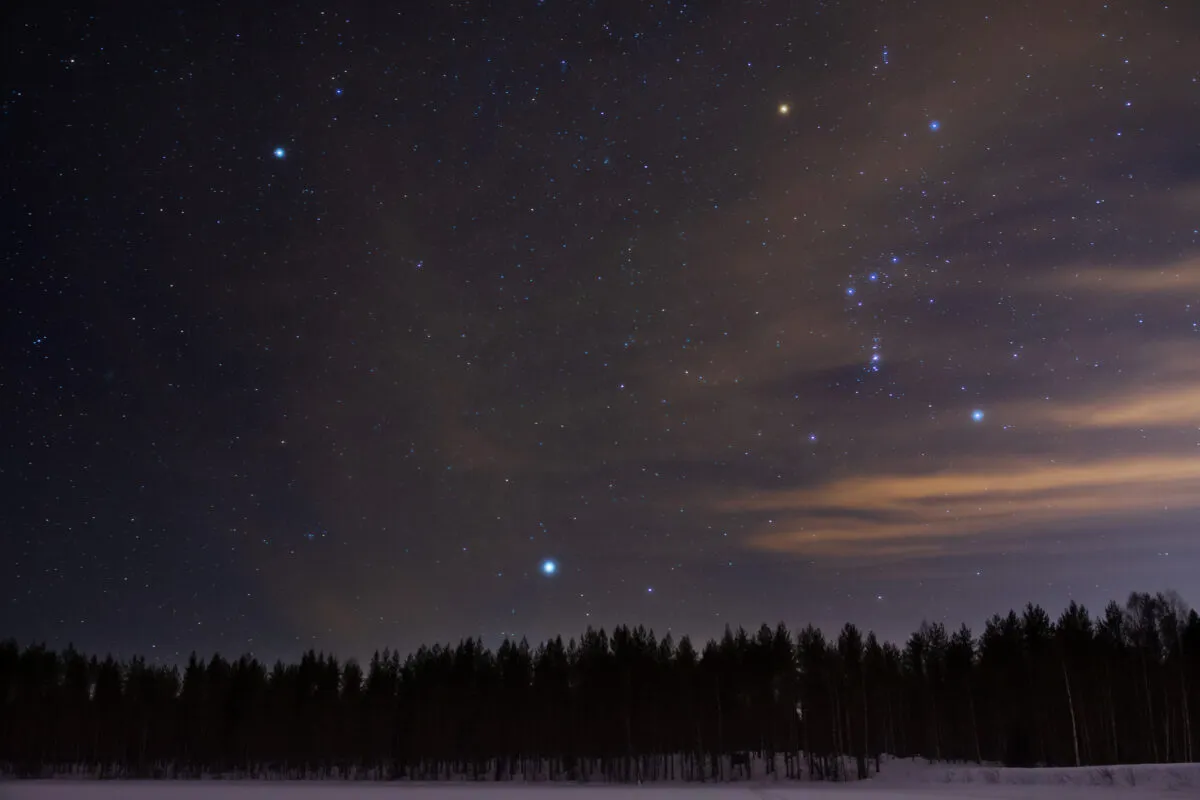
- Other names: Alpha Canis Majoris
- RA: 06h 45m 09s
- Dec: -16° 42m 58s
- Magnitude: -1.47
- Distance from Earth: 8.6 lightyears
I cannot resist including Sirius, because although a pure white star it seems to flash various colours of the rainbow, and in binoculars or a telescope it is a glorious sight.
Of course all stars twinkle, but Sirius particularly so, partly because it is so brilliant and partly because from Britain it is never very high up.
The luminosity is 26 times that of the Sun; the white dwarf companion is within the range of most telescopes.
Some old records describe Sirius as red, but it is unlikely that there has been any real colour change.
Algieba
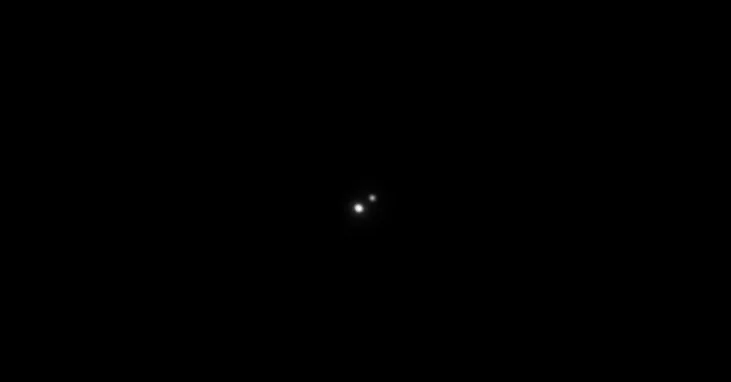
- Other names: Gamma (γ) Leonis; 41 Leonis
- RA: 10h 19m 58.3s
- Dec: +19° 50m 30s
- Magnitude: A+B) +1.99
- Distance from Earth: 126 lightyears
Algieba is the second brightest star in the Sickle star pattern of Leo; the name comes from the Arabic Al-Jabbah (the Forehead).
It is a fine double: the orange K-type primary is of magnitude +2.28, while the G-type secondary is of magnitude +3.5, and decidedly yellowish.
As the separation is over four seconds of arc, this is a fine, easy pair: it is a binary, with a period of 619 years.
Earlier estimates gave the distance as only 90 lightyears.
The Crab Nebula
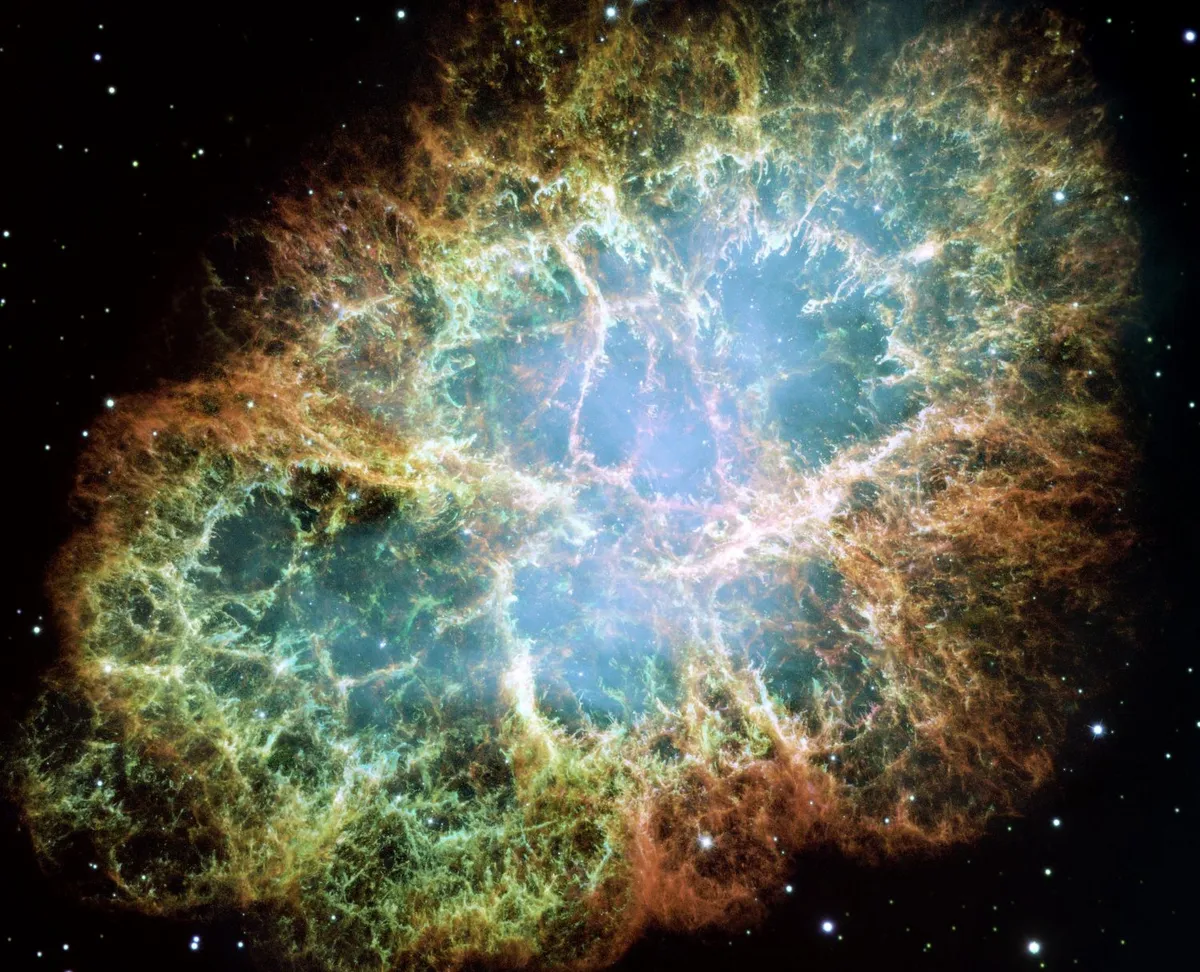
- Other names: M1; NGC 1952; Taurus A
- RA: 05h 34m 32s
- Dec: +22° 00m 52s
- Magnitude: +8.4
- Distance from Earth: 6,300 lightyears
Discovered in 1731 by John Bevis, the Crab Nebula is probably one of the most famous objects in the night sky, the remnant of the 1054 supernova.
Good binoculars will show it near Alheka (zeta (ζ) Tauri), and its wonderfully intricate detail can be recorded with really good amateur equipment, though in small telescopes it is not particularly impressive.
In its centre is its ‘powerhouse’, a neutron star with a period of 33 milliseconds.
The Pleiades
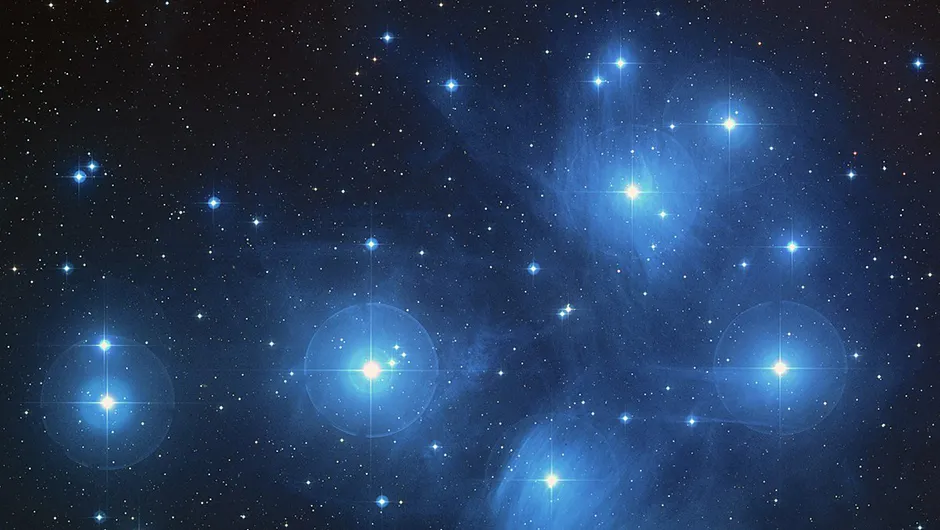
NASA, ESA, AURA/Caltech, Palomar Observatory The science team consists of: D. Soderblom and E. Nelan (STScI), F. Benedict and B. Arthur (U. Texas), and B. Jones (Lick Obs.)
- Other names: M45; the Seven Sisters
- RA: 3h 47m 24s
- Dec: +24° 7m
- Magnitude: +1.2
- Distance from Earth: 440 lightyears
The best views of the ‘Seven Sisters’ are obtained with binoculars or a very low power on a telescope.
The brightest star is Alcyone, magnitude +2.9.
How many individual stars can you see with the naked eye on a clear night?
If you can manage a dozen, you are doing very well indeed.
The total number of cluster stars is around 500.
The hottest stars are of type B; the age is of the order of 100 million years.
The associated nebulosity is visually elusive, but not hard to photograph.
R Leonis
- RA: 09h 47m 33.4s
- Dec: +11° 25m 43s
- Magnitude: +4.4 to +11.3
- Distance from Earth: about 300 lightyears
This is a very red Mira variable (period 312 days); for much of the time it is within the range of good binoculars.
It is about five degrees west of Regulus, making a triangle with 18 and 19 Leonis.
At maximum it is easily visible with the naked eye.
Its variability was discovered in 1782 by J Koch of Danzig; only two Mira stars were previously identified, Mira itself and R Hydrae.
Whirlpool Galaxy
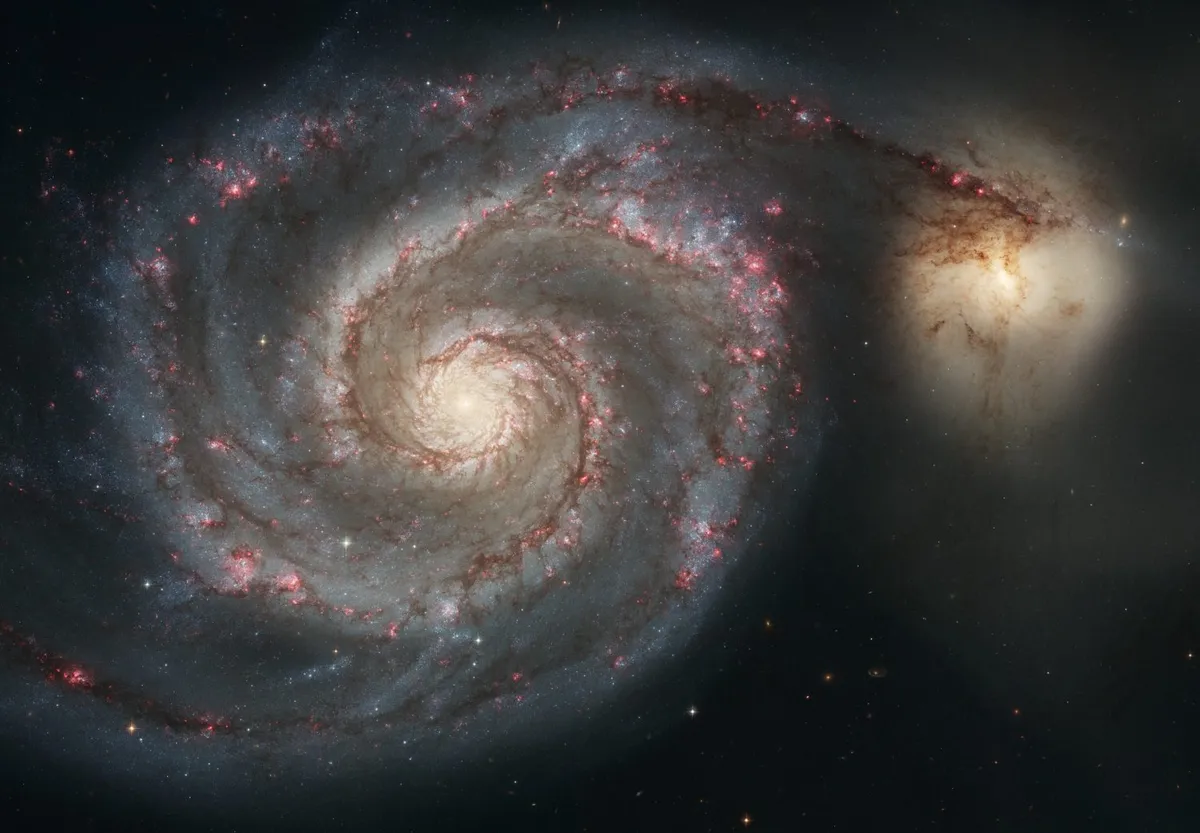
- Other names: M51; NGC 5194
- RA: 13h 29m 52.7s
- Dec: +47° 11m 43s
- Magnitude: +8.9
- Distance from Earth: 23,000,000 lightyears
The Whirlpool Galaxy was discovered in 1773 by Charles Messier, and its companion, NGC 5195, by Méchain eight years later.
It was the first galaxy seen to be spiral, by Lord Rosse in 1845 – at that time only the great Birr telescope could show it as a spiral, whereas now any good amateur equipment will suffice!
Both galaxies are within binocular range, not far from Alkaid in the Great Bear, across the boundary of Canes Venatici.
This may not be the best season for observing it, as it will be relatively low, but it is circumpolar and is a glorious sight.
Castor
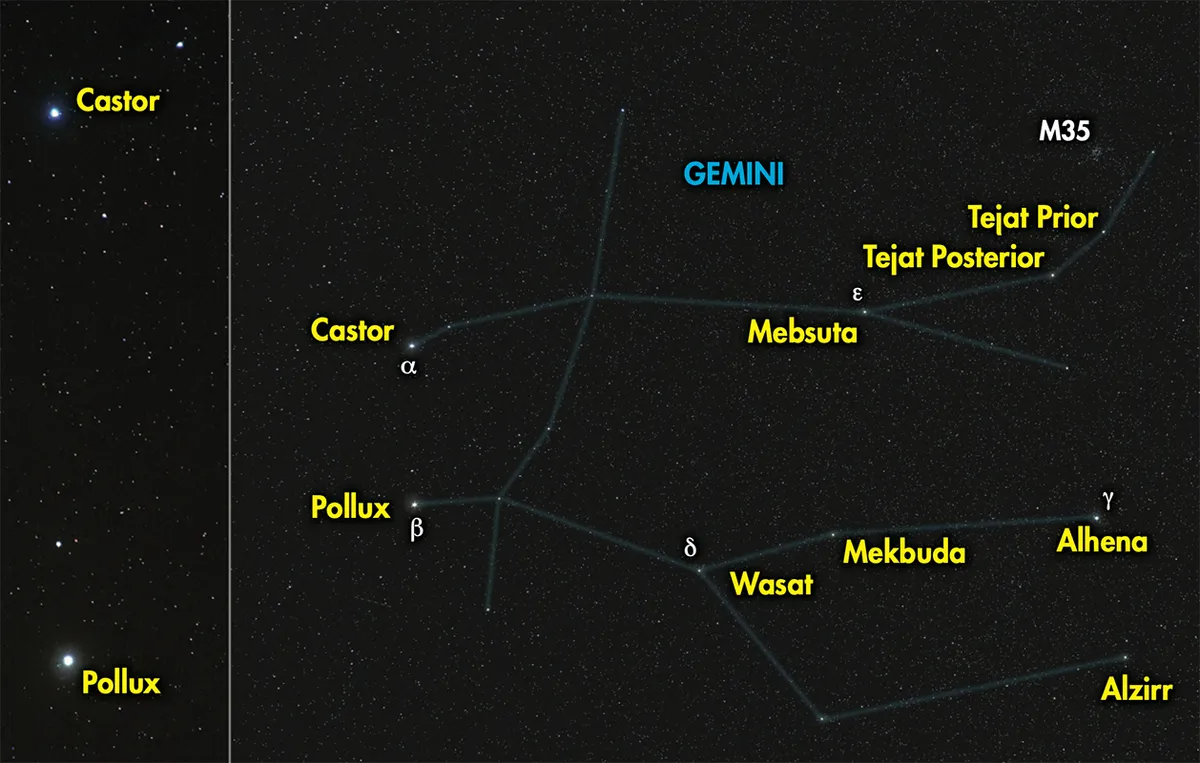
- Other names: alpha (α) Geminorum; 66 Geminorum
- RA: 07h 34m 36s
- Dec: +31˚ 53m 18s
- Magnitude(A+B): +1.58
- Distance from Earth: 49.8 lightyears
The senior, but fainter of the two Twins; it is half a magnitude inferior to beta (Pollux).
It is a fine binary; magnitudes +1.9 and +2.9, and has a revolution period of 350 years according to recent estimates.
The pair is easily separable with a small telescope. Each is itself a spectroscopic binary, and there is a more distant member of the system, Castor C (YY Geminorum), which is also binary.
Altogether, therefore, the Castor system is made up of six stars, four bright and two dim.
Find out more about Castor and Pollux in Gemini.
Double cluster in Perseus
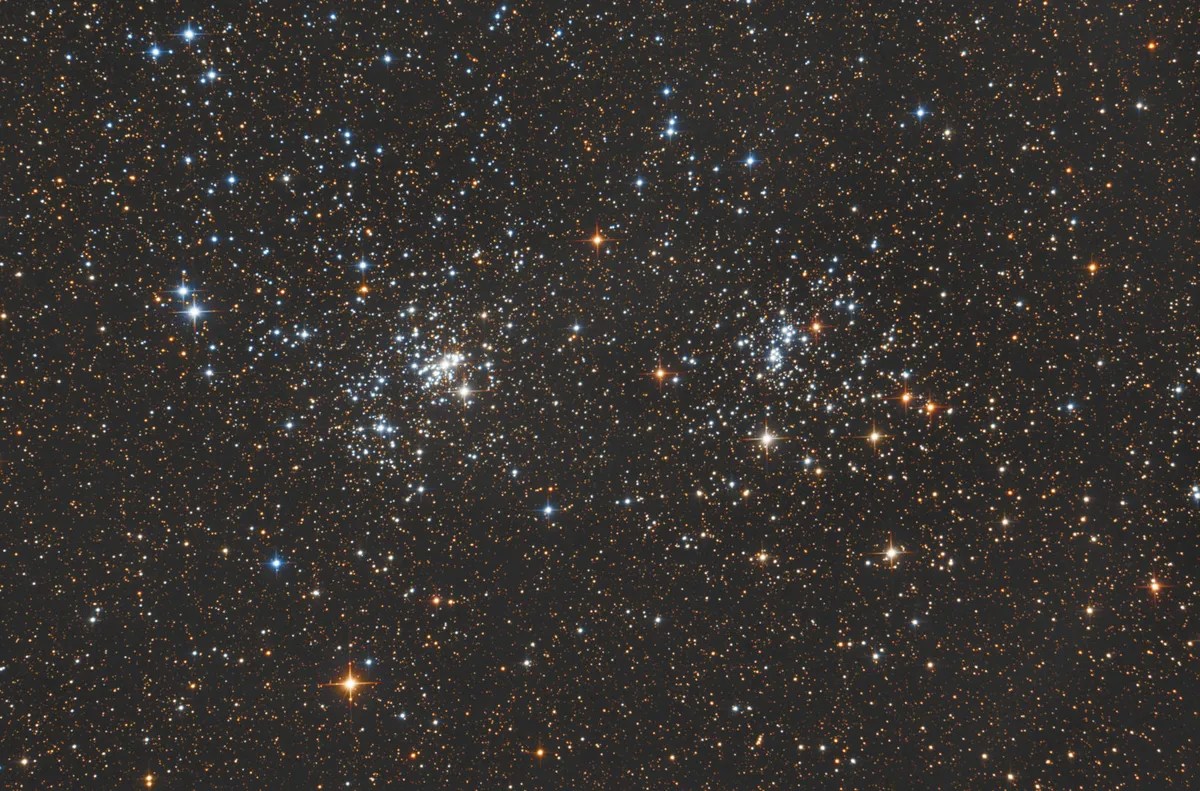
- Other names: NGC 869 and NGC 884; Caldwell 14
- RA: 02h 19m and 02h 22m
- Dec: +57° 09m and +57° 07m
- Magnitude: +4.3 and +4.4
- Distance from Earth: 7,100 lightyears and 7,400 lightyears
The ‘Sword-Handle’ is superb in binoculars or very lower power on a telescope; each cluster is about 30 arcminutes across.
The beauty of the scene is enhanced by the bright red star in NGC 869, the richer of the twin clusters.
With the naked eye the two show up as a dim patch of light some way from the W of Cassiopeia.
It is a pity that both cannot be seen together with a higher magnification, but they are favourite targets for astrophotographers.
The Great Nebula in Orion
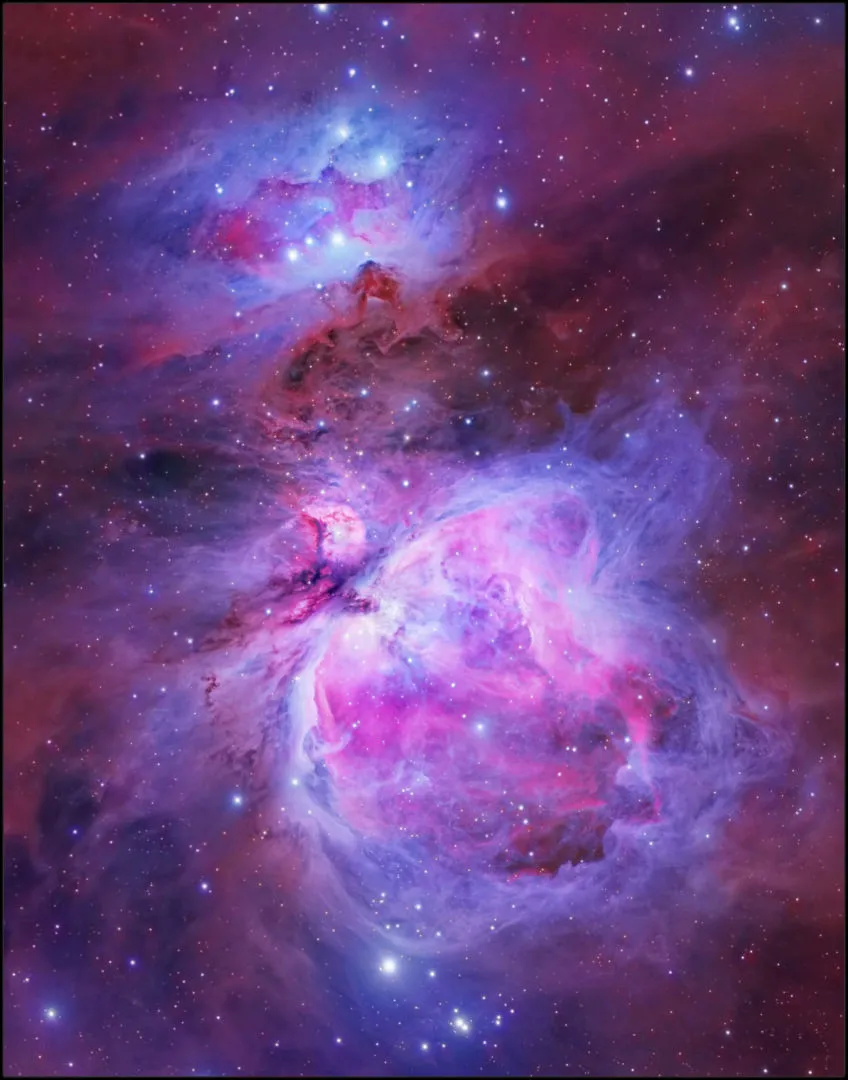
- Other names: M42; NGC 1976
- RA: 05h 35m 17.3s
- Dec: -05° 23m 28s
- Magnitude: +3
- Distance from Earth: 1,500 lightyears
The Sword of Orion is the finest of all nebulae in our skies, though it is not far away on the cosmical scale, and is the nearest ‘stellar nursery’ where new stars are being born.
Its recognition as a nebula was first noted in 1610 by Nicholas Persec, in the very earliest days of telescopic astronomy, but no doubt it was seen much earlier, as it is clearly visible with the naked eye below the Hunter’s Belt.
Even a small telescope will show the bright nebulosity and the darker patches, together with Theta Orionis (the Trapezium), the group of stars responsible for the luminosity of the near side of the nebula.
Powerful stars lie inside, and the Hubble Space Telescope has shown protoplanetary discs (now called proplyds), thought to indicate the earliest stages of the formation of planetary systems.
The Great Nebula can be studied and admired with the naked eye, with binoculars, a small telescope or a really powerful instrument, and it is an ideal photographic subject.
I never tire of looking at it, and I have no hesitation in selecting it as my favourite stellar object in the winter sky.
